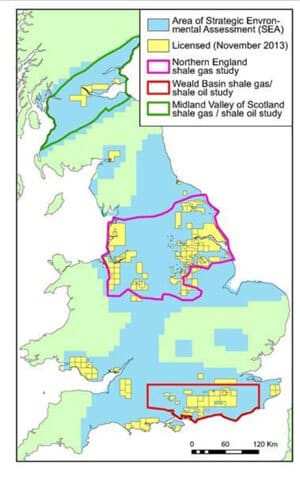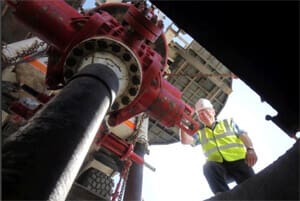
Wind energy is playing an essential role in meeting the Scottish Government’s ambitions to generate the equivalent of 100% of Scotland’s electricity consumption from renewable energy sources by 2020. This target aims to reduce carbon emissions and ensure secure, cost-effective energy supply.
To meet these objectives, wind energy must be able to provide an energy supply that is less carbon intensive over its lifetime than the technologies it displaces. It must also be able to supply energy to consumers at an affordable price.
This review aims to enable Scottish policy makers and other interested parties to better understand the range of academic estimates of the life cycle costs and emissions of wind energy, and the evidence on which these estimates are based.
 Community investment in commercial energy projects has the potential for far-reaching and positive impacts. This research has demonstrated that there is much interest in, and enthusiasm for, increasing community investment in commercial energy projects in Scotland.
Community investment in commercial energy projects has the potential for far-reaching and positive impacts. This research has demonstrated that there is much interest in, and enthusiasm for, increasing community investment in commercial energy projects in Scotland.
The report presents an analysis of the factors which support and limit the ability of communities to invest in commercial renewable energy schemes, and makes recommendations for action based on domestic and international evidence. It concludes that there is significant potential for increased community investment in commercial energy schemes, given the appropriate support, funding and advice.
Useful links

Scotland’s energy system is undergoing a major transformation in response to pressures to deliver clean, affordable and secure supplies of energy, in conjunction with wider economic and social benefits, amid rapid changes in global energy markets and technologies. Energy storage is likely to be an increasingly important part of this transition. In particular, there is a need to understand the potential for storage integration across the whole energy system (power, heat and mobility).
ClimateXChange commissioned two reports to review the state of technological and market development in the context of Scotland’s energy policy ambitions. They cover thermal energy storage and electrical energy storage respectively.
Insights from each of these reports are presented in the Energy Storage in Scotland Summary to help support thinking on integrated energy policy.

Given the Scottish Government’s ambitions for a low carbon economy, it is important to understand the potential GHG emissions associated with unconventional gas extraction, and what could be done to mitigate or reduce the risk of any such emissions.
SEPA and the Scottish Government asked ClimateXChange to undertake a desk-based study of the estimated greenhouse gas (GHG) emissions associated with the extraction of onshore unconventional gas in Scotland, from exploration to the point of fuel production.
This study finds that the key factors influencing the lifecycle emissions of unconventional gas extraction in Scotland are:
- Methane that could escape when the borehole is being prepared for gas production, or servicing a borehole during production.
- The impact of building associated infrastructure (such as drilling platforms, pipelines and roads) in areas with peat soil. This is because peat soil holds carbon which will be released when the soil is removed or drained when preparing the land for being built on.
- Fugitive methane emissions that escape from valves and pipes, which are difficult to capture.
The study concludes that the life-cycle greenhouse gas emissions per unit of energy from unconventional gas extraction in Scotland are likely to be equivalent to those of conventional gas extraction in Europe, if best practice is followed and building on peat is avoided.
ClimateXChange invited policymakers, planners and regulators to the Edinburgh Centre for Carbon Innovation in November to discuss the challenges and opportunities posed by this developing industry.

- the release of the British Geological Survey’s assessment of shale resources in the Midland Valley of Scotland;
- the release of the final report of the Scottish Government’s Independent Expert Scientific Panel on Unconventional Oil and Gas; and
- the opening of DECC’s 14th round of onshore oil and gas exploration licensing.
The event also launched CXC’s report on the lifecycle costs and emissions of unconventional gas extraction in Scotland, which will assist policymakers in assessing the climate impacts of unconventional gas extraction in Scotland, as well as opportunities to minimise these impacts. The report can be downloaded under ‘Related projects’ on the right hand side.
Participants from Scottish Government, Local Government, industry, academia and community groups discussed the roles that policy, planning and regulation may play going forward.
Presentations from researchers, practitioners and policymakers can be downloaded using the links on the right hand side of this page.
Relevant publications referenced during the event:
- The British Geological Survey’s Assessment of shale resources in the midland valley of Scotland
- The Scottish Government’s Independent Expert Scientific Panel on Unconventional Oil and Gas, final report
- ClimateXChange’s lifecycle assessment of the greenhouse gas emissions from unconventional gas extraction in Scotland
- Potential greenhouse gas emissions associated with shale gas extraction and use: a study by Prof. David J C MacKay FRS and Dr. Timothy J Stone CBE, comissioned by the Department of Energy and Climate Change
- The UK Government’s response to the MacKay-Stone report: Potential greenhouse gas emissions associated with shale gas extraction and use
- The Department of Energy and Climate Change’s regulation and licensing of energy industries and infrastructure
Co-hosted by CXC, the UK Energy Research Centre and the Edinburgh Centre for Carbon Innovation , this event presented recent findings by leading UK energy researchers, and considered ongoing research, policy and strategy challenges.
A panel of key Scottish policymakers was provided with the opportunity to respond to research findings, followed by open discussion.
Topics included:
- Electricity generation technology costs
- The future role of gas, including unconventional gas
- Green finance and green Jobs
- Decarbonising heat: networks, pumps or pipes?
- The role of bioenergy in the UK
- UK energy strategy under uncertainties
Dowload the presentations using the links on the right.
Changes in Scotland’s electricity sector will make an important contribution to meeting the Scottish Government’s economic and environmental goals. To deliver these changes, policy makers will rely on accurate information about how electricity is generated, distributed and used.
However, sources of this information are currently held in various different places and are not always shared effectively with potential users.
This event was held by ClimateXChange and the Fraser of Allander Institute (University of Strathclyde) with the aim of improving the availability of electricity data in Scotland. In response to the needs identified by the Scottish Government Office of the Chief Economic Advisor, the event aimed to address limitations in the availability of electricity data by:
- Identifying where relevant information is and who has access to it
- Agreeing on a process for bringing these sources of information together, allowing access by all potential users
- Identifying gaps in current information
- Agreeing on ways to close these information gaps
The event was attended by representatives from the Scottish Government, Scottish Renewables, the James Hutton Institute, ClimateXChange and the Fraser of Allander Institute.
For further information on this event, please see the presentation slides available for download on this page.
Scottish Planning Policy is a material consideration which helps planning authorities shape development plans and make decisions on wind farm developments. The potential visual impact of wind farms is an important factor in plan-making and in these decisions. In order to minimise the visual impact of wind farms, the current Scottish Planning Policy (2010) recommends that planning authorities apply a 2km separation distance between potential sites for onshore wind farms above 20MW and the edge of cities, towns and villages. The 2km separation has in general been well received by planning authorities, communities and developers but there is a lack of clarity about the evidence base for setting this specific distance.
ClimateXChange was asked by the Scottish Government to examine the evidence base for the separation distance. The project reviewed a wide range of relevant sources from over 15 countries. It found that most separation distances have been set based on noise, shadow flicker or health considerations, with none specifically relating to visual impacts. The study found no direct link between the evidence and the policy for a 2km separation distance.
The size of onshore wind turbines has been increasing and is expected to increase in coming years. This study therefore also looked at whether there is evidence to support an increase in the 2km distance to reflect this trend. It found that, even in the few cases where visual impact had been a key consideration for setting separation distances, no reference had been made to turbine heights.
After reviewing UK and international literature on the use of separation distances for onshore wind farms, the study discusses ways that planning policy might be revised, for example:
– by articulating a clear understanding of the impact of the current 2km distance (positive and/or negative);
– by finding ways to improve engagement with stakeholders, and ways to better understand the subjective aspects of how people perceive the visual impact of wind turbines;
– by expanding the descriptions of the criteria that planning authorities should consider in identifying different zones (Para 190 in the current SPP).
ECCI and ClimateXChange organised the event Shaping Our Energy Future to bring together experts, opinion formers and community representatives to explore the question: What energy future do we want and how do we shape it?

Shaping Our Energy Future aimed to:
- Promote more informed dialogue about different visions for Scotland’s energy provision (incl. perceived and actual costs & benefits) – using video and other means of communicating different points of view that can be accessed publicly;
- Create authoritative information resources – and an independent platform to host these resources – that provides the evidence base for the ongoing and future dialogue between stakeholders;
- Understand better the views of different stakeholders and where these views overlap; where there is conflict; and where we can work collaboratively; and also who is NOT represented currently;
- Explore how we can enable better engagement with communities and other stakeholders who are not currently part of this dialogue.
This information session on unconventional gas was run jointly by ClimateXChange, the Royal Society and the Royal Academy of Engineering for Scottish Government policy teams.

The first session focussed on the findings of last year’s joint academies review and what we know about unconventional gas resources.
The second session looked at risk and public consultation/engagement.
